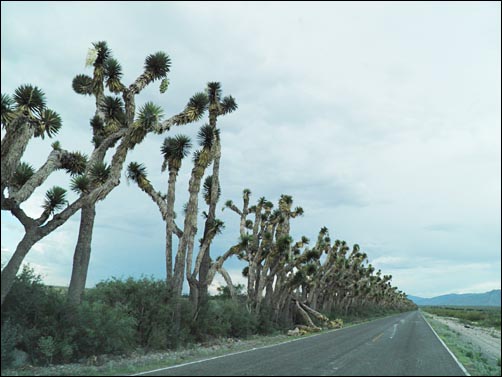Biant Yucca (Yucca Filifera)
Left: Stalk and flowers. Right: Close-up of flowers. Both from 8.4 miles south of Paila,
Coahuila, Mexico. Photographs by Wynn Anderson.
Left: Yucca filifera along the highway, 6 miles west of Huariche,, Coahuila, Mexico.
Right: A single mature plant, Puente del Uilitio, Coahuila, Mexico. Photographs by Wynn
Anderson.

- Common English Names: Giant Yucca
- Common Spanish Names: Palma China, Izote Yucca, Palma Corriente
- Scientific Name: Yucca filifera (YUCK-uh fill-ih-FUR-uh)
- Family: Asparagaceae (formerly Agavaceae) (Asparagus Family)
- Geographic Range: Northern Tamaulipas and Coahuila, south to San Luis Potosí
and Guanajuato, Mexico.
- Description: Large, graceful aborescent plants to 30' tall, sometimes
multi-stemmed from a massive bulbous base and usually multi-headed above with age. Relatively small
(considering the large size of the plant) radiating heads of green, linear-lanceolate, spine-tipped
leaves crown the limbs. Most notably, pendulous heads of white flowers and, subsequently, clusters
of globose fruit, drape straight down below the leaf crown in summer.
- Landscape Usage: Easily transplanted while young or still without massive
limbs. The plant is often salvaged from developing areas to line fence rows and roads in its native
range. Seed-grown plants are sometimes available commercially in the US, but the plants are slow
growing and ultimately too large in size and scale for most landscapes.
- Notes: Formerly known as Yucca australis.

Last Update: 24 Aug 2013



